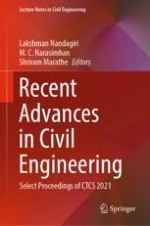2023 | OriginalPaper | Buchkapitel
Fire Resistance of RCC T-beam Under Cyclic Load: A Numerical Study
verfasst von : Dibya Jyoti Basu, Devjit Acharjee, Debasish Bandyopadhyay
Erschienen in: Recent Advances in Civil Engineering
Verlag: Springer Nature Singapore
Aktivieren Sie unsere intelligente Suche, um passende Fachinhalte oder Patente zu finden.
Wählen Sie Textabschnitte aus um mit Künstlicher Intelligenz passenden Patente zu finden. powered by
Markieren Sie Textabschnitte, um KI-gestützt weitere passende Inhalte zu finden. powered by
